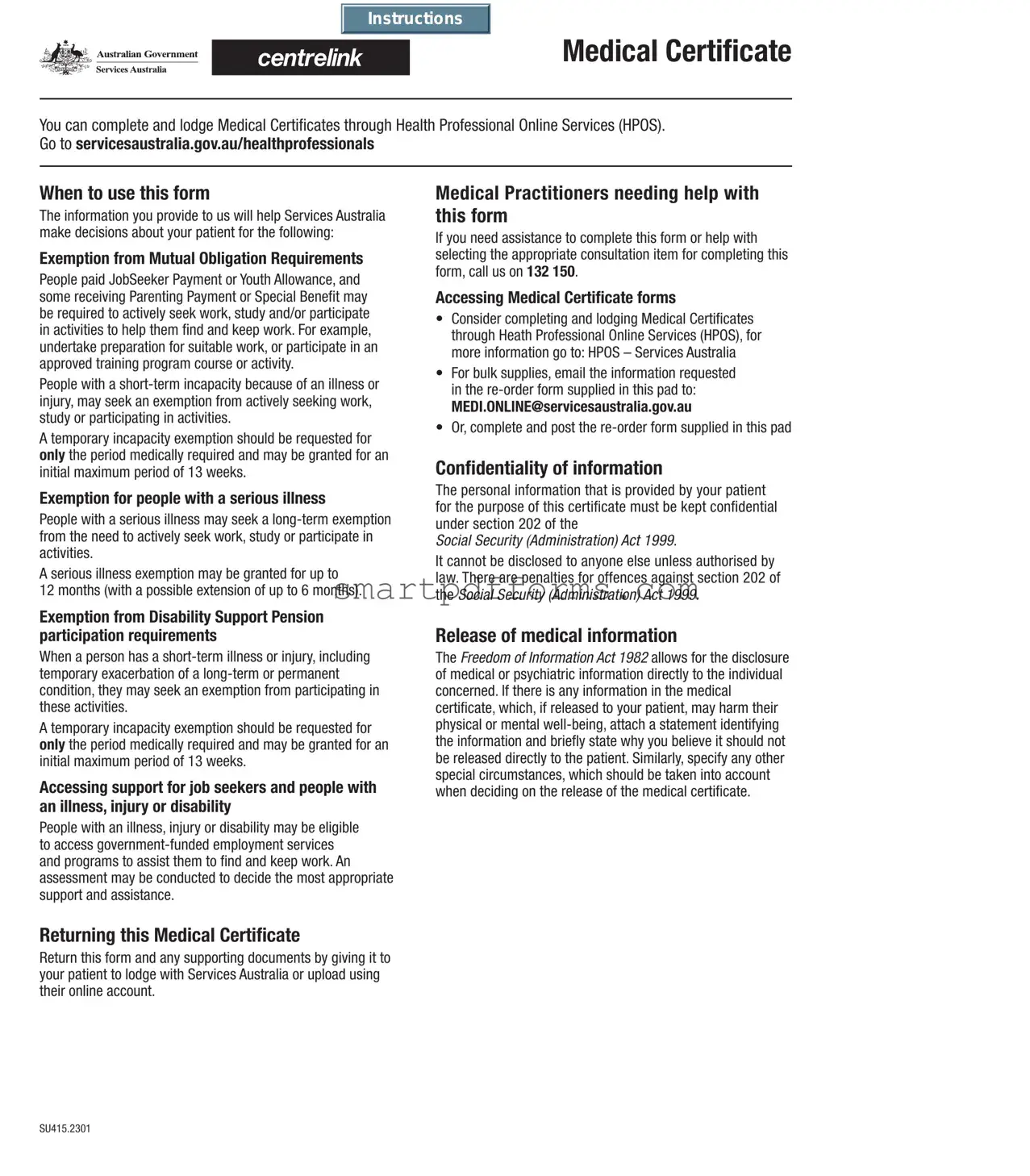•Less than 13 weeks – functional impact is expected to fully resolve within 13 weeks and includes temporary exacerbations of permanent conditions.
•13 weeks up to 24 months – functional impact is expected to persist for 13 weeks up to
24 months, and includes temporary exacerbations of permanent conditions. May be receiving treatment or rehabilitation for cancer/leukemia, severe stroke, acquired brain injuries, serious burns, and serious physical injuries. This could include severe mental health conditions for which the person is receiving treatment in an institutional setting.
•24 months or more – functional impact expected to persist beyond 24 months and not likely to improve with treatment.
List your patient’s diagnosed medical conditions that have a functional impact on their ability to do any work, study or participate. Please provide a specific clinical diagnosis if available, including staging and/or disease classification.
For example,
•‘cervical spondylosis’ rather than ‘neck pain’
•‘major depressive disorder’ or ‘adjustment disorder with depressed mood’ rather than ‘depression’.
If your patient has more than 2 conditions that have a functional impact, you will need to provide the details on a separate medical certificate.
This relates to your assessment of the patient’s capacity to do any work, study or participate in activities and:
•includes any other suitable work, and not just previous work. This is any work that a person is capable of doing and not just work the person prefers or what they are qualified for
•should not take into account non-medical factors such as age, work experience, education or language barriers.
Detail past, current and future/planned treatment for listed conditions.
This includes symptom management and functional rehabilitation treatment, as well as curative treatment.
Detail the day-to-day functional impact the listed conditions have on the patient, including how it affects their ability to work, study or participate in activities.
Functional impacts may be physical and non-physical impacts of a condition. For example:
•how long a person can sit or stand for
•how well they can interact with other people, or
•how well they can concentrate.
Please include your opinion about any assistance or interventions that may help your patient to find and keep a job. For example, a rehabilitation or pain management program, study, training and job readiness program.
A serious illness can include:
•cancer/leukemia
•severe stroke
•acquired brain injury
•severe burns
•severe physical injury requiring long recovery period, and
•severe mental health conditions with treatment in an institutional setting.




 Centrelink customers can lodge this online, go to
Centrelink customers can lodge this online, go to 



 Give details below
Give details below